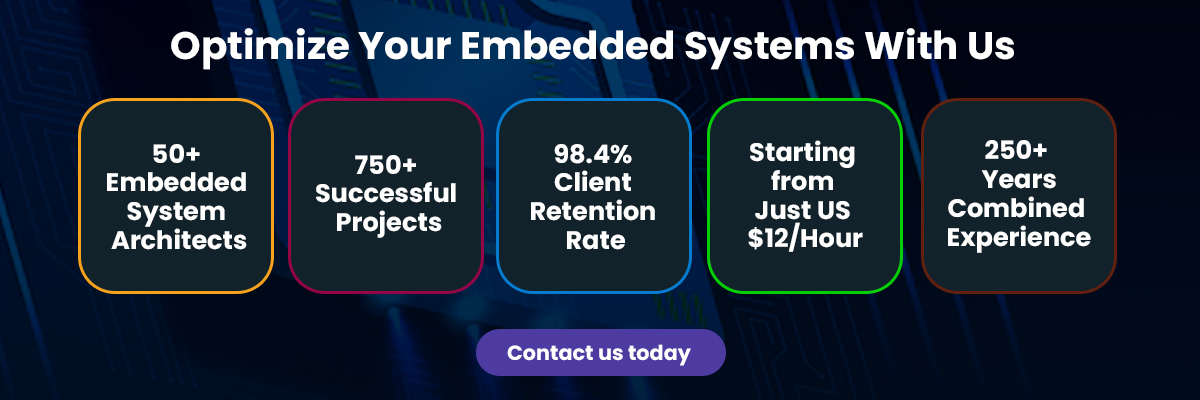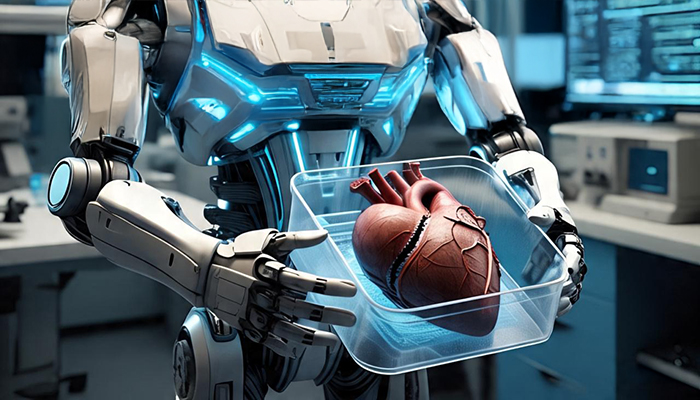In a world where your home adapts instantly according to your needs and your car predicts your every move, real-time embedded systems play a crucial role. These systems are the digital wizards behind the scenes, ensuring your devices respond promptly.
In this article, we’ll explore the architecture of Embedded system models, demystifying the technology that powers the gadgets we can’t live without.
Understanding Real-Time Embedded Systems
Imagine if your car’s airbags took too long to deploy during a sudden stop or your smartwatch hesitated to display your heart rate during a morning run. In our fast-paced world, we rely on real-time embedded systems to ensure quick responses without noticeable delays. These systems control the digital brains and nerves of our smart devices, making them intelligent and highly responsive.
Key Components of Real-Time Embedded Systems
Hardware:
Hardware is the core of embedded systems, just like the engine of a car. It consists of microprocessors, memory, sensors, and some other physical components. The ability of the system to function and interact with the outside world depends on its hardware. For example, it includes chips that process touch input, detect motion, and take pictures in a smartphone.
Software:
Software is the brain of the hardware’s engine. Embedded programs that are created using embedded software C++ control how the hardware behaves and provides instructions. For example, the software tells your phone’s camera to click a picture.
Real-Time Capability:
What truly sets real-time embedded systems apart is their remarkable speed in reacting to inputs. They process data quickly, allowing tasks to be completed without noticeable delays.
For example, your car’s anti-lock brakes react promptly to prevent skidding. These systems are essential for applications where precise timing is critical, such as autonomous vehicles or medical devices, due to their real-time capability.
Real-Time Design Software
Real-time design software is similar to composing beautiful music. Just as a composer orchestrates various instruments to create a harmonious symphony, real-time software designers coordinate the interplay between software and hardware to craft a seamless and responsive user experience.
Deterministic Behavior:
In real-time design, predictability is paramount. Every action must have a known and guaranteed outcome within a specific, predefined time frame. Think of it like pressing a button on your TV remote control; you want an immediate channel change, not a delayed one. This immediate and assured response characterizes deterministic behavior, crucial in applications like medical monitoring.
Task Scheduling:
Task scheduling in real-time design software resembles a skilled chef timing a multi-course meal perfectly. Each dish must be meticulously timed, ensuring it’s ready precisely when it’s meant to be served. In real-time software, tasks are like culinary creations, scheduled with utmost precision.
This meticulous scheduling ensures that critical operations, whether managing an industrial process or monitoring a spacecraft’s systems, are never delayed. Just as a chef strives for culinary excellence, real-time software design aims for operational excellence.
Interrupts:
Interrupts are similar to someone gently tapping your shoulder to get your attention while you’re engrossed in a task. In real-time systems, interrupts are alerts sent by hardware or external factors that require immediate attention from the software.
For example, in automotive safety, the airbag system responds instantly to an interrupt generated when a collision is detected, potentially saving lives.
Embedded System Models: The Blueprints for Real-Time Design
In the realm of real-time embedded systems, architects often rely on models as blueprints to conceptualize and design systems with precision. Let’s explore some popular models:
Finite State Machine (FSM):
Imagine a traffic light. It operates in a fixed sequence – green, yellow, red – in response to specific events, such as traffic or pedestrian crossings. FSMs are a natural fit for systems with distinct states that transition in response to specific triggers or events, providing a structured way to represent systems with well-defined behaviors.
Task-Based Model:
Think of your to-do list, you have a set of tasks, each with its priority and importance. In real-time embedded system models, a task-based model breaks down the system into individual tasks, each assigned a specific job and priority level. This approach proves invaluable in systems with multiple, concurrent activities, such as a smartphone running various apps simultaneously.
Data Flow Model:
Visualize a factory assembly line where raw materials move from one station to another, with each station adding value to the product. Data flow models focus on how information flows through a system, particularly useful in data-intensive applications, where data processing and transformation are key.
For example, in a weather monitoring system, data flows from sensors to data processors, then to display units, with each stage adding value by processing, analyzing, and presenting the data meaningfully.
Hiring an Embedded Architect: Your Guide to Success
Experience Matters:
Hire an embedded architect with a proven track record of designing successful real-time systems, as experience brings invaluable insights into effective approaches.
Communication Skills:
An embedded architect should translate complex technical concepts into understandable language, ensuring clear communication among team members and stakeholders, facilitating collaboration, and preventing misunderstandings.
Problem-Solving Abilities:
In embedded system models, challenges are common. You should look for someone who has strong problem-solving skills to first identify and then overcome all the obstacles that they face during the development process. You need to ensure that your project stays on course, even in the face of unexpected difficulties.
Technical Proficiency:
An Embedded Architect expert needs a deep understanding of relevant hardware and software technologies. They need to be technically proficient in microcontrollers, sensors, communication protocols, and programming languages like C and embedded software C++. Technical competence guarantees the ability to solve problems and make informed design decisions.
Domain Knowledge:
Hire an embedded architect with domain expertise in your project’s industry, as they can provide insights that lead to the development of more specialized and efficient solutions.
Project Management Skills:
An embedded architect often plays a pivotal role in project management, including task scheduling, resource allocation, and project planning. Strong project management skills ensure your embedded system project stays on track, meets deadlines, and stays within budget.
Creativity and Innovation:
While technical skills are essential, creativity and innovation are equally important. An architect who can think creatively may find novel solutions to complex problems, leading to more efficient designs and competitive advantages.
Attention to Detail:
Embedded systems require meticulous attention to detail. Small errors can have significant consequences, so an architect who is thorough and meticulous can prevent costly mistakes and ensure flawless system operation.
Team Collaboration:
Collaboration is key in any development project. An embedded architect should work effectively with cross-functional teams, including hardware engineers, software developers, and quality assurance professionals, fostering a collaborative and cohesive working environment.
Adaptability:
Technology evolves rapidly, and project requirements can change. An adaptable architect can adjust to new challenges and incorporate emerging technologies into the system’s design, ensuring its long-term relevance.
References and Portfolio:
Don’t hesitate to ask for references and review a candidate’s portfolio of past projects. This provides valuable insights into their work quality and project success.
Cultural Fit:
Consider whether the architect’s work style and values align with your organization’s culture. A harmonious fit can contribute to a smoother working relationship and project execution.
The Future of Real-Time Embedded Systems
IoT Revolution:
Everyday things are connected to the internet now, thanks to IoT. As the IoT world continues to grow, all smart gadgets such as your thermostat and connected cars are becoming more convenient and powered by real-time technology that works behind the scenes.
Healthcare Advances:
Real-time technology is already a game-changer in healthcare, helping medical devices perform tasks such as remote health monitoring, precise medication dosing, and rapid diagnosis. The future of healthcare looks even brighter as real-time systems continue to innovate, resulting in healthier patients and more efficient medical systems.
Autonomous Everything:
We’re entering a time when machines are becoming more self-reliant. Think about cars that can drive themselves, homes that can make decisions independently, and robots that can perform tasks autonomously. All of this is possible because of embedded systems that control these machines in real-time. As technology gets even better, we’ll see more smart machines that make our lives easier, safer, and more efficient.
In a Nutshell,
Real-time embedded systems are the unseen architects behind our smart and responsive world. They ensure our devices respond instantly, shaping a future where IoT connects us more than ever, healthcare becomes smarter and more efficient, and machines take on autonomous roles in our daily lives.
As we venture into this exciting realm, hiring the right embedded architect becomes crucial, considering their experience, technical prowess, and problem-solving abilities. The future promises even greater integration of real-time systems into our lives, making everything smarter, safer, and more convenient.








